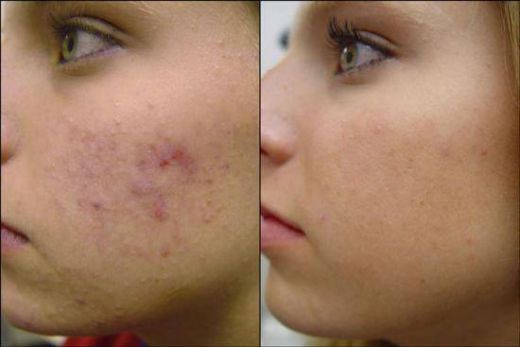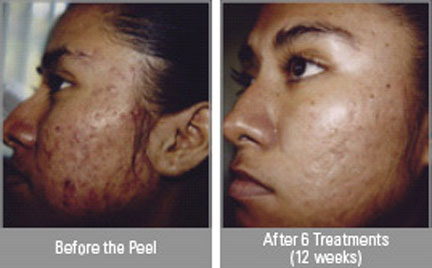Post Inflammatory Hyperpigmentation – Pictures, Treatment, Causes
What is Post Inflammatory Hyperpigmentation?
Post Inflammatory Hyperpigmentation is a medical condition that means that the person is suffering from skin discoloration after the recuperation of a skin disease. Other experts would describe Post Inflammatory Hyperpigmentation as a medical term given when the person undergoes skin darkening due to the increased level of melanin which usually is a normal part of the recuperation process. Still others define Post Inflammatory Hyperpigmentation as an acquired illness with the person reporting a presence of skin patches and dark macules at the site of cutaneous inflammatory disease that the person previously experienced. When one has this kind of medical diagnosis, it is widely known medically as the common etiological factors of the alteration of skin color.
Post Inflammatory Hyperpigmentation after acne vulgaris
Post Inflammatory Hyperpigmentation, in addition to that, is given the acronym PIH. Post Inflammatory Hyperpigmentation or PIH is commonly reported to be manifested by persons who have darker skin tones such as those persons belonging to the Mediterraneans, Africa or Asia. Those belonging to these groups are at higher risk of acquiring Post Inflammatory Hyperpigmentation or PIH.
Post Inflammatory Hyperpigmentation Causes
Medically speaking, the etiological causes of why a person undergoes Post Inflammatory Hyperpigmentation are brought about by two medically termed mechanisms which are:
1. Epidermal Melanosis
Epidermal melanosis happens or exists as a result of the release and the oxidation of the arachidonic acid converted to leukotrienes, prostaglandins and the like. This kind of oxidation process is done in a subsequent manner. These are otherwise known as an end product of the inflammatory process which will lead to the alteration of both the melanocyte activity and immune cell activity. Aside from that, they are known to stimulate the epidermal melanocyte which leads to the increase in the melanin synthesis and the increase in the transfer of the pigment that surrounds the keratinocytes. When there is an increase in the stimulation and transfer process of the melanin granules, it will lead to what is medically termed as epidermal hypermelanosis.
2. Dermal Melanosis
Meanwhile, dermal melanosis happens when there is a disruption of the inflammatory process in the person’s basal cell layer which leads to the pigment of the melanin being released and trapped by the macrophages in the person’s papillary dermis which is medically termed as a pigmentary kind of incontinence. Other experts would describe this stage as a deeper pigmentation wherein there is a higher chance that the pigment may be trapped by the tissue macrophages which is a large immune cell.
Post Inflammatory Hyperpigmentation Treatment
With regards to the treatment, it is difficult and a bit prolonged which often takes at a maximum of a year to get the desired results of depigmentation. The treatment management that we mention here will be effective in the improvement of the epidermal hypermelanosis type of Post Inflammatory Hyperpigmentation. However, those who are afflicted with dermal hypermelanosis may not have see an effect with some of the treatments mentioned here. The following are the suggested treatments for persons experiencing Post Inflammatory Hyperpigmentation:
1. Pharmalogical Treatment
The common medical or pharmacological treatments commonly prescribed are topical agents. The topical pharmacological treatments include:
- Glycolic acid
This is a peel kind of medication which is often called ‘GA peels’ and is used in combination with hydroquinone and Tretinoin. This is an effective pharmacological medication for persons who are suffering from Post Inflammatory Hyperpigmentation and those who have dark skin complexion.
- Azelaic acid
This is a pharmacological treatment that is used in treating acne vulgaris..
- Corticosteroids
This classification of medication will target the person’s immune system so as not to target the cascade of the inflammatory process.
- Tretinoin cream
This pharmacological medication is effective in persons of African American descent. This is a known medical treatment for persons who are suffering from Post Inflammatory Hyperpigmentation.
- Hydroquinone
This is a commonly prescribed drug for persons suffering from Post Inflammatory Hyperpigmentation. This kind of pharmacological medication is known to be effective in the elimination of the symptoms associated with Post Inflammatory Hyperpigmentation.
Other depigmenting pharmacological agents:
- Aloe vera leaf extract
- Glabridin microsponge loaded gel
- Retinaldehyde
- Trichloroacetic acid
2. Surgical Treatment
Pertaining to surgical treatment options for persons suffering from Post Inflammatory Hyperpigmentation, the following surgical procedures may be done depending on the assessment done by a physician:
- Intense pulsed light therapy
- Chemical peels
- Laser treatment
- Fractional photothermolysis
- 1064-nm Q switched Nd: YAG laser treatment
Under the surgical care, we will discuss shortly the two surgical treatment modalities which are laser therapy and chemical peels. A chemical peel can be used as an adjunct in the treatment of Post Inflammatory Hyperpigmentation and those persons who are not responsive to the topical medications prescribed by their respective physicians. On the other hand, laser therapy, which is quite expensive, is not used routinely as it can lead to the person acquiring Post Inflammatory Hyperpigmentation itself. Hence, the risk should be weighed.
Post Inflammatory Hyperpigmentation After Laser treatment
Post Inflammatory Hyperpigmentation After Chemical Peels
3. Other treatment options include:
- Make up that is hypo allergenic in nature
This is a good option that one can use to reduce the effects associated with Post Inflammatory Hyperpigmentation. Aside from that, it will help restore self-esteem during the recuperation stage or process. Also, it is considered to be non-intrusive and a safe treatment option.
- Natural products
Another treatment option is the use of natural products like herbal extracts and fruit juices which work effectively. An example of natural products includes lemons, papaya, kiwis, grapefruits, raspberry, green tea, mulberry, and licorice which all works to lighten the darkened skin.


